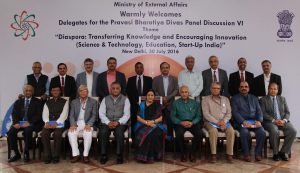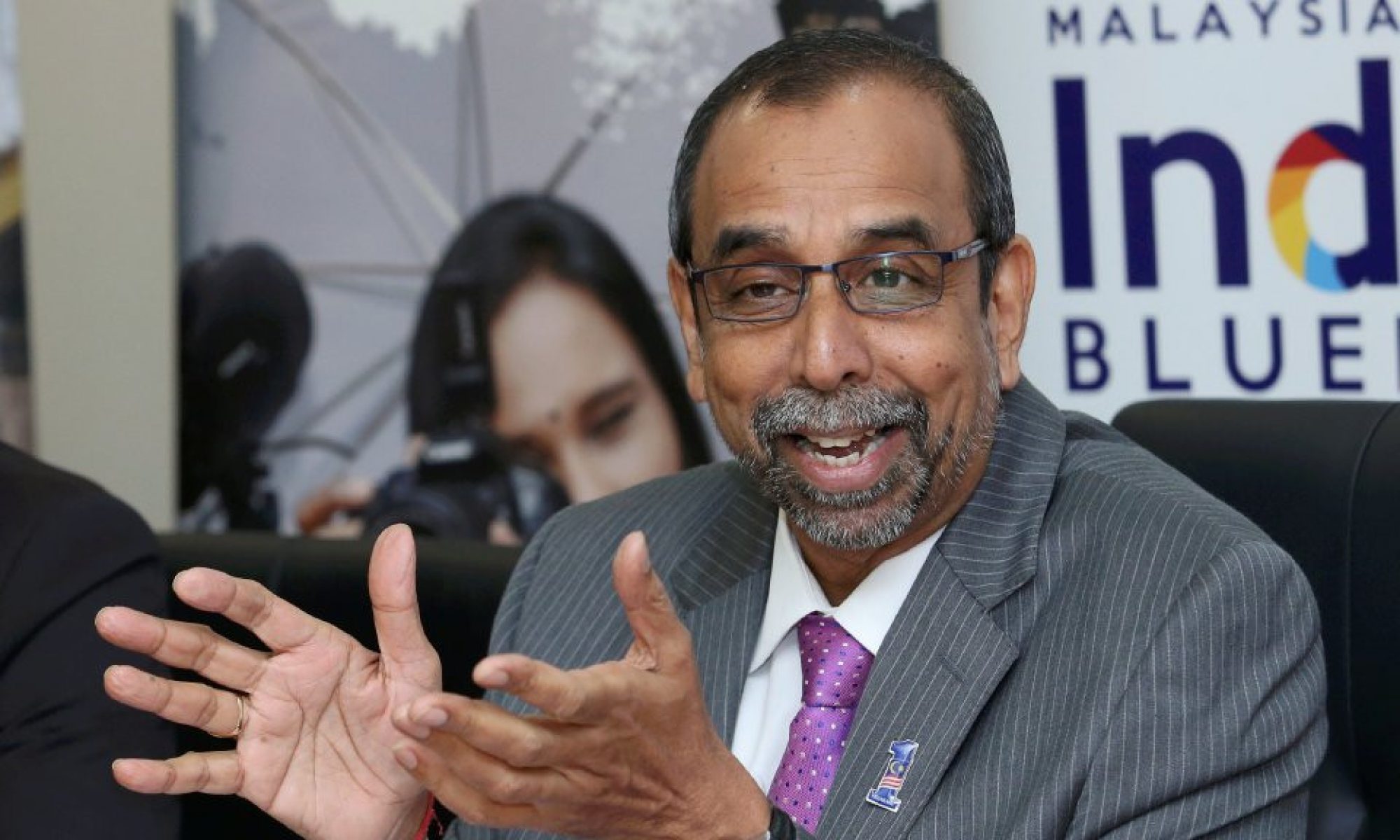Excerpts from a presentation I made at the PBD Panel Discussion in 2016 in New Delhi organized by the Ministry of External Affairs. This Panel Discussion was chaired by Hon. Minister of External Affairs.
PBD PANEL DISCUSSION 2016
DIASPORA: TRANSFERRING KNOWLEDGE AND ENCOURAGING INNOVATION
(Science & Technology, Education, Start-Up India)
30 JULY 2016
MINISTRY OF EXTERNAL AFFAIRS
JAWAHARLAL NEHRU BHAWAN
NEW DELHI

- Raising the quality of education in public schools – In order to properly address the needs of all children, and to prepare the nation to perform at an international level, it is important to first envision what a highly-successful education system must accomplish. What kind of students are best-prepared to meet the challenges of a 21st century economy? What kind of education prepares them for this rapidly globalizing world? These aspirations comprise two aspects: firstly, those for the education system as a whole, and secondly, those for individual students.
In Malaysia, for example, the new National Education Blueprint is in its fourth year of implementation. The government is committed to provide the necessary support including the financial and other relevant support to ensure the success of this very ambitious initiative.
In October 2011, the Ministry of Education launched a comprehensive review of the education system in Malaysia in order to develop a new National Education Blueprint. The decision was made in the context of raising international education standards, the Government’s aspiration of better preparing Malaysia’s children for the needs of the 21st century, and increased public and parental expectations of education policy. Over the course of 15 months (October 2011 to December 2012), the Ministry drew on many sources of input, from education experts at both local and international including from UNESCO, World Bank, OECD, and six local universities, to principals, teachers, parents, students, and other members of the public from every state in Malaysia. The result is a Malaysia Education Blueprint that evaluates the performance of current Malaysia’s education system with considerations of historical starting points against international benchmarks. The Blueprint also offers a vision of the education system and student aspirations that Malaysia both needs and deserves, and suggests 11 strategic and operational shifts that would be required to achieve that vision. To implement these strategic and operational shifts, the government is committed to provide the necessary resources required.
It is important to make an objective and a comprehensive review of the current education system and make the necessary changes. It is vital that the government makes the necessary resources, especially the financial resources, to achieve the objectives.
A couple of thoughts to be taken seriously:
- It is extremely important to produce an indigenous model of the education system which addresses the various idiosyncrasies and caters for the unique needs of the country. While it is fine to look at various other models it is not advisable to adopt totally any particular model, however good that maybe.
- A nation can consciously build an admirable school system if it pays close attention to the needs of children, if it selects and prepares its educators well, and if it builds educational communities that are not only physically attractive but conducive to the joys of teaching and learning.
- Finland has made extraordinary educational reforms that appear to be paradoxes because they depart so clearly form the global educational reform thinking (Sahlberg, 2010). However, teacher professionalism, intelligent accountability, and a systematic focus on equity are among the aspects of Finland’s education system that have inspired others.
- In Finland, teachers teach less and students spend less time studying both in and out of school than their peers in other countries (Sahlberg, 2010).
- Finnish schools lack the standardized testing, test-preparation, and private tutoring of the United States and much of the world (Sahlberg, 2010).
- Other aspects to be given priority.
- Teacher quality – significant improvements to teacher education.
- Regulatory / Accreditation body for teachers.
- Upskilling of teachers – Professional development
- Reduce the emphasis on examinations – (…to treat these current student assessment studies with caution, contending that results in studies … do not measure interpersonal, spatial, or creative skills…(Howard Gardner quoted in Sahlberg, 2011)
- The Malaysian Government has sustained high levels of investment in education over the 59 years since independence. As early as 1980, the Malaysian federal government’s spending on primary and secondary education, as a percentage of Gross Domestic Product (GDP), was the highest in East Asia. In 2011, the amount spent, at 3.8% of GDP or 16% of total government spending, was not only higher than the OECD average of 3.4% of GDP and 8.7% of total public spending respectively, but also at par with or more than top-performing systems like Singapore, Japan, and South Korea. In 2016, with an education the Government, once again, has continued to devote the largest proportion of its budget, 16% to the Ministry. This demonstrates the very real commitment the Government has to education as a national priority.
- Dramatic progress on improving access to education – The education system in Malaysia has made tremendous progress since 1957. At the time of Independence, over half the population had no formal schooling, while only 6% of Malaysian children had been educated to secondary level, and a paltry 1% to the post-secondary level. Five and a half decades later, access to education has been transformed beyond recognition. In 2011, Malaysia had achieved near universal enrollment at the primary level at 94%, and the percentage of students who dropped out of primary school had been significantly reduced (from 3% in 1989 to just 0.2% in 2011). Enrollment rates at the lower secondary level (Form 1 to 3) had risen to 87%. The greatest improvement was undoubtedly at upper secondary level (Form 4 to 5), where enrollment rates had almost doubled, from 45% in the 1980s, to 78% in 2011. These enrollment rates are even higher once enrollment in private schools is factored in: 96% at primary, 91% at lower secondary, and 82% at upper secondary level.
These rates are higher than most developing countries, although they are still lower than that of high performing education systems like Singapore and South Korea. In parallel, there has been rapid expansion in preschool education. Around 77% of students are now enrolled in some form of preschool education (either public or private), and the target is for universal enrollment through the Education National Key Results Area (NKRA) in the Government Transformation Program (GTP).
The significant improvement in access to education is echoed by a similar improvement in attainment. Youth literacy has risen from 88% in 1980 to near-universal literacy of 99% today, while adult literacy has increased even more dramatically, from less than 70% to over 92% in the same time frame. Further, the proportion of the adult population (aged 15+) with no schooling has declined, from 60% in 1950 to less than 10% in 2010, while the proportion (aged 15+) that has completed secondary education has risen from around 7% in 1950 to almost 75% over the same time period. These are achievements of which Malaysia can be proud of.
- Dropout rate – With India recording almost 30 per cent of dropout rate at the primary level, Malaysia will be able to share its experience in reducing the dropout rate of students esp. at the primary level which has been reduced to less than 1 per cent.
- The Teaching of Higher Order Thinking Skills (HOTS)
With the growing complexities of the modern world, the importance of learning is increasing day by day. The problems are complex and they require specialized attention. So unless people are trained at high levels of competence, it is difficult to meet the requirement of the modern world. In the present context of globalization and competition, we require high level thinking skills in education to adjust in different situations. HOT emphasizes students’ real learning achievement and practical implication of education which is vital. Thus, HOT is beneficial for all stakeholders of education in society to promote four pillars of learning (learning to know, learning to do, learning to be and learning to live together). Active learning can make a course more enjoyable for both teachers and students and most importantly, can cause students to thinking at higher level.
Nurturing high level thinking skills that enable students to synthesize meaning or apply ideas to other contexts are key. We are living in a rapidly changing world and finding that our low level thinking is inadequate to meet demands put upon it. It is often said that we should try to provide equal opportunity and equity to all groups of people to bring the mainstream of society through education. It is possible through HOT skills in education. HOT provides a better understanding of a learners centered education.
We should manage HOT skills in the classroom teaching learning process because they have enormous benefits for learners. For this teachers must be provided with the necessary knowledge, skills and the appropriate attitude. Malaysia has started to include the teaching of higher order thinking skills to all students as early as the 1990s. Very recently, Malaysia has given new life to this initiative and is one of the six trusts of the Malaysian Education Blueprint (2013-2025).
